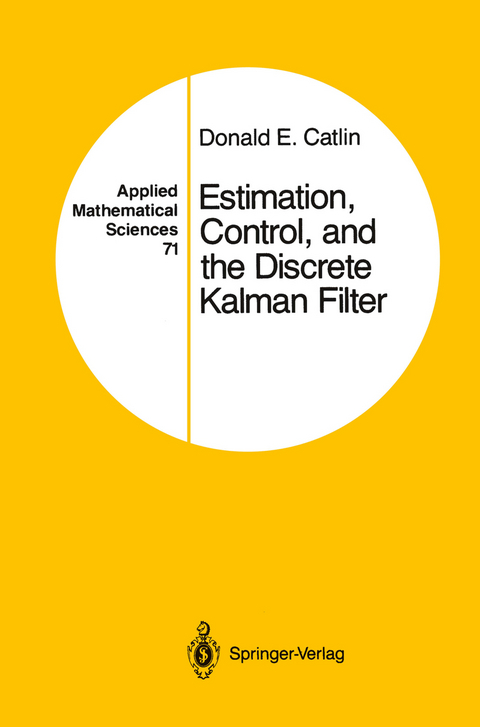
Estimation, Control, and the Discrete Kalman Filter
Springer-Verlag New York Inc.
978-0-387-96777-6 (ISBN)
1 Basic Probability.- 1.1. Definitions.- 1.2. Probability Distributions and Densities.- 1.3. Expected Value, Covariance.- 1.4. Independence.- 1.5. The Radon—Nikodym Theorem.- 1.6. Continuously Distributed Random Vectors.- 1.7. The Matrix Inversion Lemma.- 1.8. The Multivariate Normal Distribution.- 1.9. Conditional Expectation.- 1.10. Exercises.- 2 Minimum Variance Estimation—How the Theory Fits.- 2.1. Theory Versus Practice—Some General Observations.- 2.2. The Genesis of Minimum Variance Estimation.- 2.3. The Minimum Variance Estimation Problem.- 2.4. Calculating the Minimum Variance Estimator.- 2.5. Exercises.- 3 The Maximum Entropy Principle.- 3.1. Introduction.- 3.2. The Notion of Entropy.- 3.3. The Maximum Entropy Principle.- 3.4. The Prior Covariance Problem.- 3.5. Minimum Variance Estimation with Prior Covariance.- 3.6. Some Criticisms and Conclusions.- 3.7. Exercises.- 4 Adjoints, Projections, Pseudoinverses.- 4.1. Adjoints.- 4.2. Projections.- 4.3. Pseudoinverses.- 4.4. Calculating the Pseudoinverse in Finite Dimensions.- 4.5. The Grammian.- 4.6. Exercises.- 5 Linear Minimum Variance Estimation.- 5.1. Reformulation.- 5.2. Linear Minimum Variance Estimation.- 5.3. Unbiased Estimators, Affine Estimators.- 5.4. Exercises.- 6 Recursive Linear Estimation (Bayesian Estimation).- 6.1. Introduction.- 6.2. The Recursive Linear Estimator.- 6.3. Exercises.- 7 The Discrete Kalman Filter.- 7.1. Discrete Linear Dynamical Systems.- 7.2. The Kalman Filter.- 7.3. Initialization, Fisher Estimation.- 7.4. Fisher Estimation with Singular Measurement Noise.- 7.5. Exercises.- 8 The Linear Quadratic Tracking Problem.- 8.1. Control of Deterministic Systems.- 8.2. Stochastic Control with Perfect Observations.- 8.3. Stochastic Control with Imperfect Measurement.- 8.4. Exercises.-9 Fixed Interval Smoothing.- 9.1. Introduction.- 9.2. The Rauch, Tung, Streibel Smoother.- 9.3. The Two-Filter Form of the Smoother.- 9.4. Exercises.- Appendix A Construction Measures.- Appendix B Two Examples from Measure Theory.- Appendix C Measurable Functions.- Appendix D Integration.- Appendix E Introduction to Hilbert Space.- Appendix F The Uniform Boundedness Principle and Invertibility of Operators.
| Reihe/Serie | Applied Mathematical Sciences ; 71 |
|---|---|
| Zusatzinfo | XIV, 276 p. |
| Verlagsort | New York, NY |
| Sprache | englisch |
| Maße | 156 x 234 mm |
| Themenwelt | Informatik ► Theorie / Studium ► Künstliche Intelligenz / Robotik |
| Mathematik / Informatik ► Mathematik ► Wahrscheinlichkeit / Kombinatorik | |
| Technik ► Elektrotechnik / Energietechnik | |
| Technik ► Maschinenbau | |
| ISBN-10 | 0-387-96777-X / 038796777X |
| ISBN-13 | 978-0-387-96777-6 / 9780387967776 |
| Zustand | Neuware |
| Haben Sie eine Frage zum Produkt? |
aus dem Bereich


